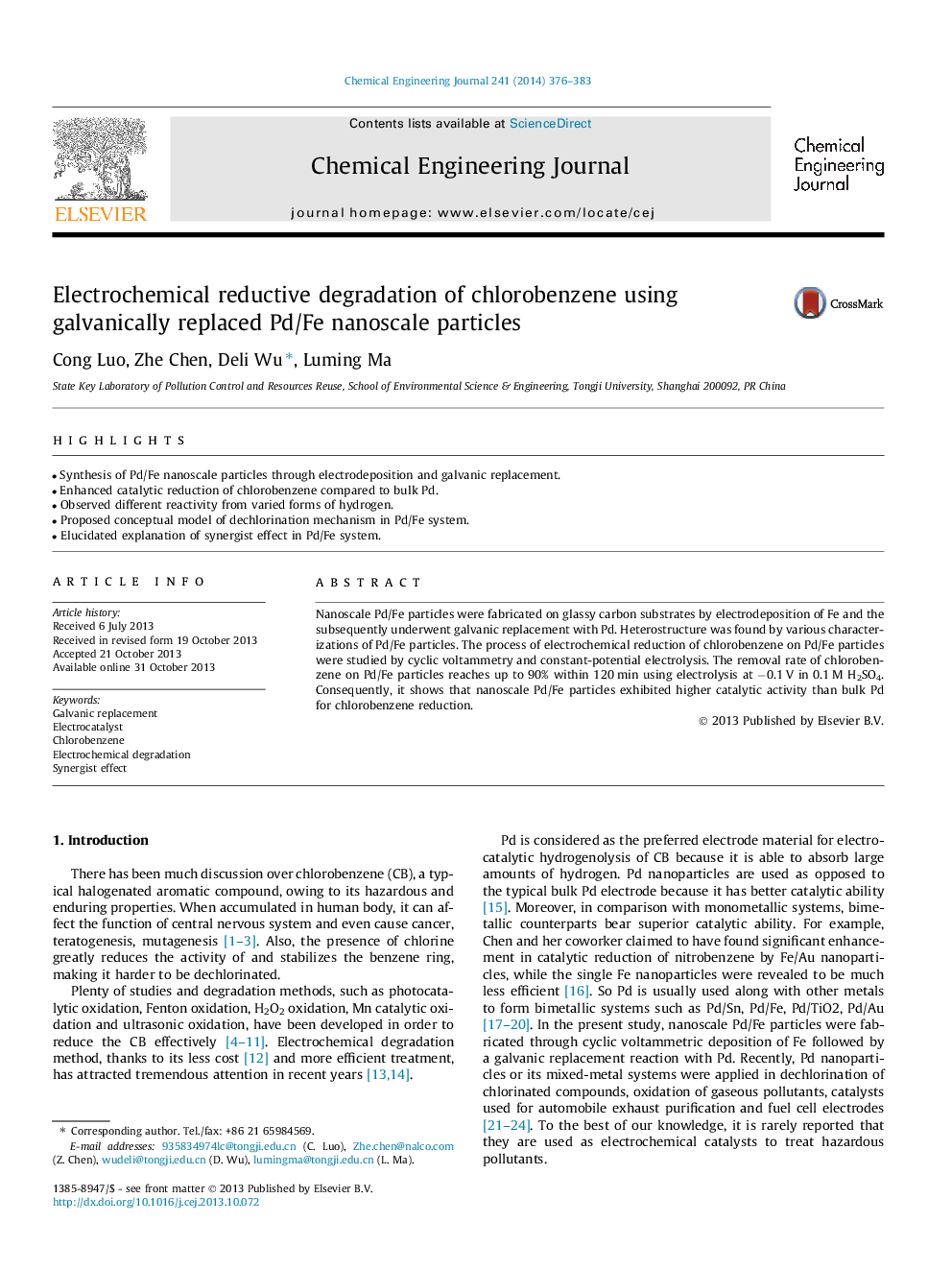| Article ID | Journal | Published Year | Pages | File Type |
|---|---|---|---|---|
| 147589 | Chemical Engineering Journal | 2014 | 8 Pages |
•Synthesis of Pd/Fe nanoscale particles through electrodeposition and galvanic replacement.•Enhanced catalytic reduction of chlorobenzene compared to bulk Pd.•Observed different reactivity from varied forms of hydrogen.•Proposed conceptual model of dechlorination mechanism in Pd/Fe system.•Elucidated explanation of synergist effect in Pd/Fe system.
Nanoscale Pd/Fe particles were fabricated on glassy carbon substrates by electrodeposition of Fe and the subsequently underwent galvanic replacement with Pd. Heterostructure was found by various characterizations of Pd/Fe particles. The process of electrochemical reduction of chlorobenzene on Pd/Fe particles were studied by cyclic voltammetry and constant-potential electrolysis. The removal rate of chlorobenzene on Pd/Fe particles reaches up to 90% within 120 min using electrolysis at −0.1 V in 0.1 M H2SO4. Consequently, it shows that nanoscale Pd/Fe particles exhibited higher catalytic activity than bulk Pd for chlorobenzene reduction.
